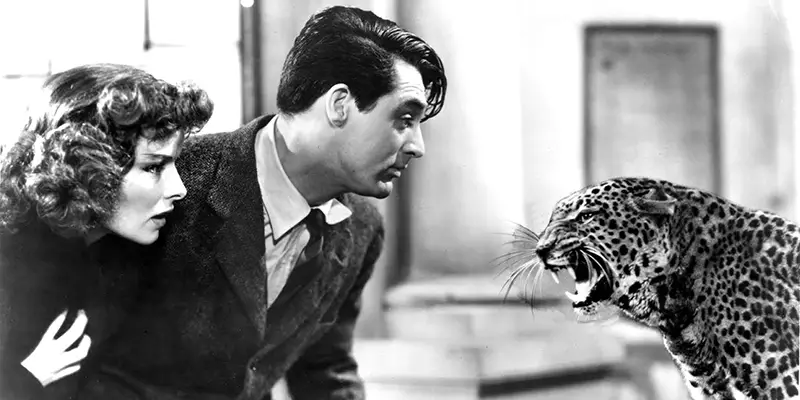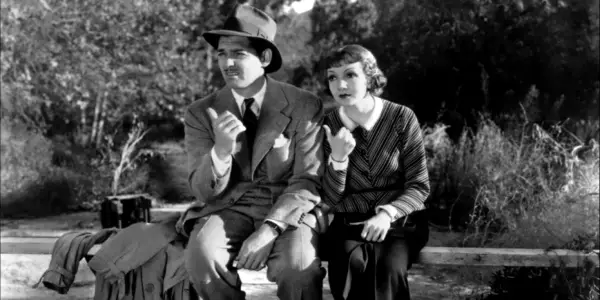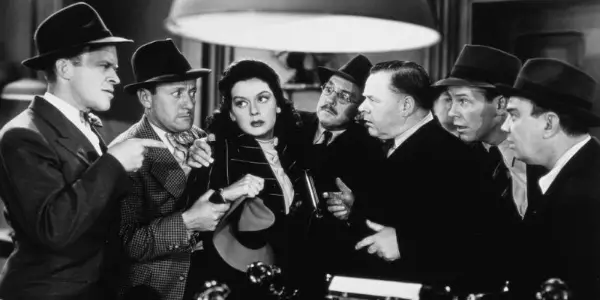Does Screwball Comedy Have a Place in Modern Cinema?

Lauren is 20 years old and is a Multimedia Journalism…
Screwball comedy is a predominantly American film genre popularised during the Great Depression. The golden era of screwball comedy was the 1930s and early 1940s, with hundreds of films being produced and the genre fast becoming one of Hollywood’s most popular. However, from the mid 1940s, evolving circumstances saw it becoming increasingly obsolete, with true screwball comedies beyond the 1960s being few and far between.
The genre has since been stripped for parts and infused into various others, most notably romantic comedies. It seems screwball comedy was a product of its time and is an outdated concept for the contemporary viewer, but does it have a place in modern cinema?
What is screwball comedy?
The term screwball is derived from baseball and is, in this context, an erratic pitch that is the opposite of a curveball. In terms of film, screwball is an offshot of comedy that is typically based on male/female relationships. The films generally derive comedy from a “battle of the sexes” narrative where the female is dominant in the relationship, usually to the horror of the male character who has his masculinity challenged.
Trademarks of screwball comedy include farcical situations heavily based on physical humour, absurdity and highly exaggerated events, as well as fast paced repartee between characters. Examples include Bringing Up Baby, which is based around a couple (Cary Grant and Katherine Hepburn) and a baby leopard, and His Girl Friday, where the characters exchange fast-paced dialogue throughout.

Escapist themes are also commonplace, which was one of the main factors in making the genre so popular during the Great Depression. The Lady Eve, for example, tells the story of a con artist (Barbara Stanwyck) who sets out to trick the wealthy and naive Charles Pike (Henry Fonda) on a cruise ship, and features many slapstick elements.
The plots generally centre around marriage and courtship, using sexual tension as a basis for comedy. Divorce and remarriage are commonly explored, with The Awful Truth being a notable example. Social class is another common element, generally a reflection of the time period, with Holiday looking at a man from a working class background (Cary Grant) who has to deal with the fact that his fiancé (Doris Nolan) is from a wealthy family.
Other common elements of screwball include mistaken identities, characters keeping secrets, single locations and many plot twists in quick succession. The comedy is generally built on juxtaposition – males and females, upper and lower classes, etc. and usually explores serious issues in a lighthearted way. The subgenre has ties to slapstick, situation comedy, romantic comedy and bedroom farce.
History
Screwball comedy was one of the most popular film genres when it first emerged in the early 1930s. It was a form of comedy which attempted to skirt around the Hays Production Code of censorship that has been introduced in American cinema around that time. Officially known as the Motion Picture Production Code, the Hays Code was named after its creator, William H. Hays. It was the first major attempt at film censorship in the USA and consisted of strict guidelines regarding what could and could not be depicted in film.
The code was extensive and had guidelines on sex, vulgarity and profanity, and whilst technically voluntary it was adhered to by all major Hollywood studios. It is thought to be from these conditions that screwball comedy was born, with screenwriters having to rely on dialogue and sly references to communicate sexual tension and more risque elements in a way that would get past the censors.

The first “true” screwball is often cited as It Happened One Night, released in 1934 and directed by Frank Capra. The film told the story of socialite Ellie (Claudette Colbert), who meets reporter Peter (Clark Gable). The genre quickly became popular, with the escapist and farcical themes proving popular with the Great Depression audience. Women’s suffrage had been achieved in the USA in 1920, and screwball used this backdrop to explore less traditional female roles.
The classic period of the genre is generally accepted to have ended in 1942, with hundreds of films being made over the course of the 1930s. Screwball comedies reflected the mindset of the era, depicting the upper classes as idle and unable to cope with reality, whilst the lower classes are shown to be capable and level-headed. This reflects the distrust of the ruling class amidst the Great Depression.
Screwball began to decline in popularity as the Great Depression came to an end in the late 1930s. Prominent screwball directors such as Frank Capra and Howard Hawks moved on to work in different genres, and the once thriving genre took a downturn. The Hays Code became obsolete in 1966 when the Motion Picture Association of America introduced a rating system. This eradicated any real “need” for screwball comedy – films could now contain sex or vulgarity, as they would just receive an appropriate rating. It was from this point onward that the genre all but disappeared.
Modern screwball comedy
There have been various attempts to reinvigorate the genre, as well as numerous homages to it over the years, with Peter Bogdanovich being a notable modern screwball director, releasing What’s Up, Doc? in 1972 and She’s Funny That Way in 2014. The latter is a very recent example of screwball comedy applied to a modern day setting, starring Imogen Poots as an escort turned Broadway actress who recounts how she became successful. The film features an ensemble that includes Rhys Ifans, Jennifer Aniston and Owen Wilson and contains many trademarks of the genre.
In 2015, Noah Baumbach directed Mistress America, which has been noted by some critics as a screwball comedy. The film stars Lola Kirke as college freshman Tracy, who becomes swept up in the whirlwind lifestyle of her stepsister-to-be Brooke (Greta Gerwig). Baumbach takes many screwball elements and applies them to a female friendship instead of the typical “battle of the sexes” trope, creating a modern interpretation of the genre in the process.

Whilst there are very few examples from the 1960s onward of pure screwball comedies, there are elements of screwball which feature across a wide array of subgenres and even outside of the realms of comedy. The Coen Brothers are notable for containing screwball elements in much of their work, with the upcoming Hail, Caesar! looking set to pay homage to screwballs of the past, as well as Hollywood in general. Directors as varied as Quentin Tarantino (fast paced repartee), David O. Russell (relationships) and Woody Allen (his entire style) have all infused elements of screwball into their work, and the genre continues to have a wide impact in modern cinema.
Conclusion
Screwball comedies were ultimately a period of their time. They were specifically designed to work around the strict censorship of the era, and the dawn of the ratings system has diminished any real need for them.
The sexual undertones of screwball may seem tame from the point of view of a post-sexual revolution viewer, but considering the time period the majority of true screwball comedies were produced in, they were surprisingly progressive. The genre allowed filmmakers to explore sexuality, gender politics and social class in a lighthearted but often forward-thinking way.
Whilst the need for screwball comedy may no longer apply, there is still something to be said for the genre, and the legacy it has forged is undeniable. In a highly self aware and frank generation, where gender and social class continue to be prominent issues, there could be some real benefit to bringing back fully fledged screwball comedy.
Do you think screwball comedy has a place in modern cinema? Let us know what you think in the comments!
Does content like this matter to you?
Become a Member and support film journalism. Unlock access to all of Film Inquiry`s great articles. Join a community of like-minded readers who are passionate about cinema - get access to our private members Network, give back to independent filmmakers, and more.
Lauren is 20 years old and is a Multimedia Journalism student based in Glasgow, Scotland. She is originally from the Shetland Isles and has held a lifelong interest in film, which she documents on her blog apeerieyarn.wordpress.com. She loves Back to the Future and wishes people would stop paying to see Michael Bay movies.













